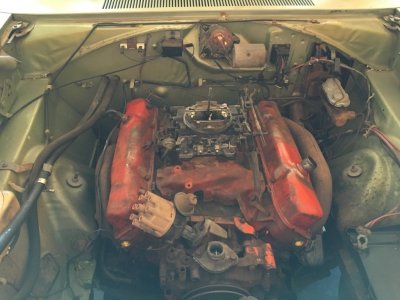MTPockets
Member
All of my Mopar experience has been with slant six's and I have a few V8 questions. My newly acquired 1974 D200 with a 400 in it had no coolant when I bought it and last weekend I intended to remedy that. I started pouring coolant into the radiator and heard the sound of coolant pouring right back onto the driveway. A quick inspection revealed that the middle freeze plug (frost plug, core plug, etc.) on the passenger side of the block was missing. I ran to the parts store and bought an expandable rubber plug, popped it in there and resumed filling the radiator. Again, there was that sound of coolant pouring onto my driveway. I saw that the middle freeze plug on the driver's side of the block was also missing. Another trip to the parts store and another rubber plug installed. Third time is a charm, right? As I poured coolant into the radiator I once again had a coolant leak. This time it seemed to be coming from the side of the head (towards the front of the engine) behind the exhaust manifold. I couldn't see it very well but it's either another freeze plug or a BIG head gasket leak. I know the right way to fix this is to pull the engine and replace them all with steel or brass plugs. However, I am assuming that a previous owner let water freeze in the cooling system and that's why the freeze plugs are missing. I sure would hate to pull the engine, replace all of the plugs and reinstall the engine only to find out I have a cracked head or block.
I have a few questions:
1. Do the heads have freeze plugs in them and if so, where are they?
2. Are there any freeze plugs in the back of the block that can only be accessed by separating the engine from the transmission?
3. What are the chances of me being able to replace all of the freeze plugs without pulling the engine?
In case you haven't noticed, I really don't want to pull the engine, replace all of the freeze plugs and reinstall the engine only to find the block has frozen and is ruined. Suggestions and advice is appreciated!
Thanks,
Scott
I have a few questions:
1. Do the heads have freeze plugs in them and if so, where are they?
2. Are there any freeze plugs in the back of the block that can only be accessed by separating the engine from the transmission?
3. What are the chances of me being able to replace all of the freeze plugs without pulling the engine?
In case you haven't noticed, I really don't want to pull the engine, replace all of the freeze plugs and reinstall the engine only to find the block has frozen and is ruined. Suggestions and advice is appreciated!
Thanks,
Scott
















